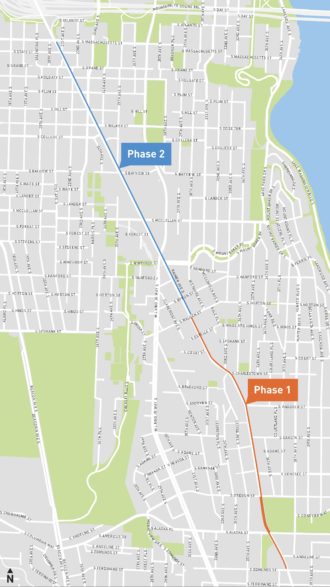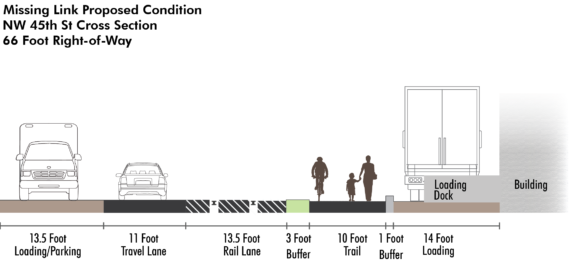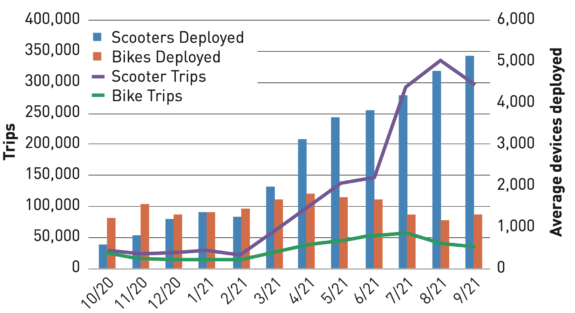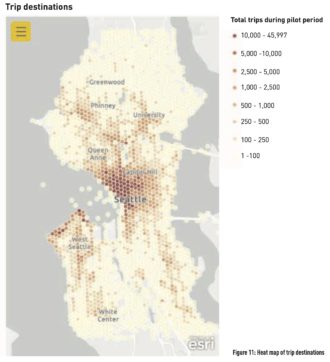 The good news is that SDOT is redesigning one of the worst stretches of roadway in the city: Rainier Avenue S between Columbia City and I-90. The bad news is that their design still prioritizes car movement above transit mobility and safety, especially for people walking and biking.
The good news is that SDOT is redesigning one of the worst stretches of roadway in the city: Rainier Avenue S between Columbia City and I-90. The bad news is that their design still prioritizes car movement above transit mobility and safety, especially for people walking and biking.
This design is simply not good enough. We are in the midst of a serious road safety crisis, especially in South Seattle. This roadway is very wide and is the only direct route between Rainier Valley and the city center. It must be safe and accessible for everyone. As Councilmember Tammy Morales said this week, “There is no excuse for not increasing the safety of our streets and sidewalks for the people of Seattle.”
At the bottom of SDOT’s project page for the Rainier project, staff responded to the consistent and persistent request from residents that the roadway should have safe bike lanes. As first noted by Ryan Packer, the response reveals a frankly terrifying lack of understanding of both the law and the city’s existing plans and policies concerning bicycling. It unfortunately needs a line-by-line analysis:
We’ve heard that Rainier Ave S is an important street for people biking because it is often the flattest and most direct route.
Yep! So they know that bike lanes are needed.
Rainier Ave S is also an important and frequently used route for transit, freight, and other vehicles. We must balance these needs and priorities when making decisions about changes to the street and the limited right-of-way space.
“Balance these needs.” On this metaphorical scale, how much does a person’s life weigh?
To date, we’ve heard that the community’s top two priorities for Rainier Ave S are to reduce crashes and keep buses moving.
“Reduce crashes.” Notice how this is actually a different goal than “safety.” People walking and biking are involved in about 7% of Seattle traffic collisions, but they account for 66% of traffic deaths. We are not asking for a general reduction in crashes, we are asking for specific safety improvements.
People biking are allowed to travel in curb-side bus-only lanes in accordance with Washington State law. The bus-only lanes on Rainier Ave S will be curb lanes, meaning that people biking are allowed to travel in these lanes.
This is accurate.
People biking in curb-side bus lanes should remember that transit has the priority and buses will often make in-lane stops.
This is extremely wrong and a bit troubling. Buses do not have priority over people biking even in a bus lane. The regular rules of the road apply. If a person is biking in the bus lane, then the bus driver needs to follow RCW 46.61.110 like any other vehicle driver. That means they must “move completely into a lane to the left of the right lane when it is safe to do so.” If the city does not want someone on a bike to be in the way of buses, then they need to build a bike lane.
People biking in bus-only lanes also need to follow the rules of Washington State law, including riding as near to the right side of the lane as possible if traveling at a slower speed than the rest of traffic.
This is also extremely wrong and a bit troubling. The law absolutely and very intentionally does not say a person biking must ride “as near to the right side of the lane as possible.” (emphasis mine). It says they “shall ride as near to the right side of the right through lane as is safe.” People biking are allowed to ride in the lane position that best keeps them safe because of course they are. It is simply unsafe to squeeze next to the curb to allow a car or a giant bus to pass you, and nobody should do this. Your life and safety is the most important priority at all times.
While bike lanes are not currently planned for Rainier Ave S, nor are they included in the Bike Master Plan, we are making other changes to Rainier Ave S that will improve conditions for people walking, biking, and rolling.
Rainier Ave S is, in fact, included in the Bike Master Plan. It was included as a part of the plan’s top-priority “Citywide Network,” which is why it got a thick blue line representing “protected bike lane.” The project team linked to the plan, but they apparently never bothered to look at it. I don’t understand how this happened, but it’s a sign that they need to go back and redo their work. (more…)
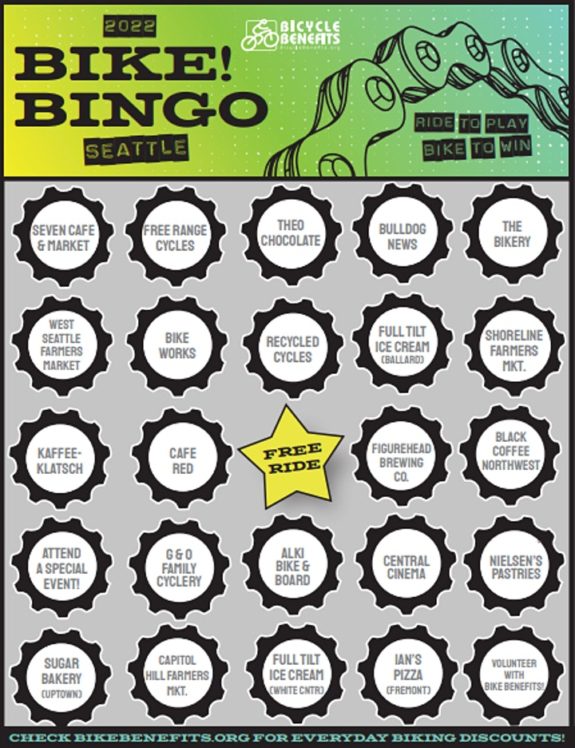 Bike Bingo is back! Bicycle Benefits launched its 2022 Seattle bike-friendly business game this month, and it runs through the end of October.
Bike Bingo is back! Bicycle Benefits launched its 2022 Seattle bike-friendly business game this month, and it runs through the end of October.
